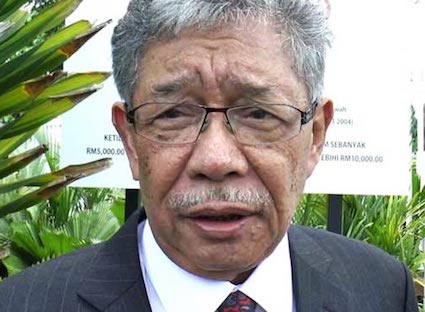Take heed, Dr Mahathir hasn’t changed, says ex-MP

Tawfik Ismail alleges that Malaysia is seeing the return of Mahathirism.
(FMT) – A former MP has urged senior politicians in Pakatan Harapan (PH) to remind their younger counterparts of the troubles Malaysia underwent during Dr Mahathir Mohamad’s tenure as prime minister in the 80s and 90s.
“The only guys old enough to remember Mahathirism are those in their 60s,” he said. “So the old need to remind the young.”
Tawfik, who as an Umno member was Sungai Benut MP from 1986 to 1990, was commenting on Mahathir’s recent statement that he was willing to serve as prime minister for as long as the people wanted him to.
Mahathir had earlier this year backed an agreement among PH parties for PKR de facto head Anwar Ibrahim to succeed him as prime minister.
Tawfik alleged that Mahathir was the same man he had been three decades ago, noting his recent announcement that a new national car project may be in the works.
“He hasn’t changed,” he said. “Now we’re getting Proton back. Welcome to 1984.” That was the year Perusahaan Otomobil Nasional decided on a joint venture with Japan’s Mitubishi Motors to produce the Proton Saga.
Tawfik said young people euphoric over PH’s electoral victory needed to know about alleged problems under the old Mahathir administration.
He cited as examples Mahathir’s rift with his deputy, Musa Hitam, and the widely condemned dismissal of Mohamed Salleh Abas as president of the Federal Court.
He also said people needed to be wary of foreign interests dumping poor technology on the country disguised as “experimentation and innovation” under Mahathir.
“This is how industrialised countries like Japan sell new technology that hasn’t found a market or old technology that has a diminishing market,” he said.
He said an example of the former was the failed Perwaja Steel project and an example of the latter was the adoption of the Mitsubishi Lancer model to manufacture the Proton Saga.
Perwaja was formed in 1982 during Mahathir’s tenure as prime minister with a paid-up capital of RM250 million. However, by the end of 1986 it had seen losses of up to RM131 million, reportedly due to management problems and the appreciation of the yen.
The company was later revived but was forced to shut down its Kemaman operations in 2013, laying off 1,500 workers.

